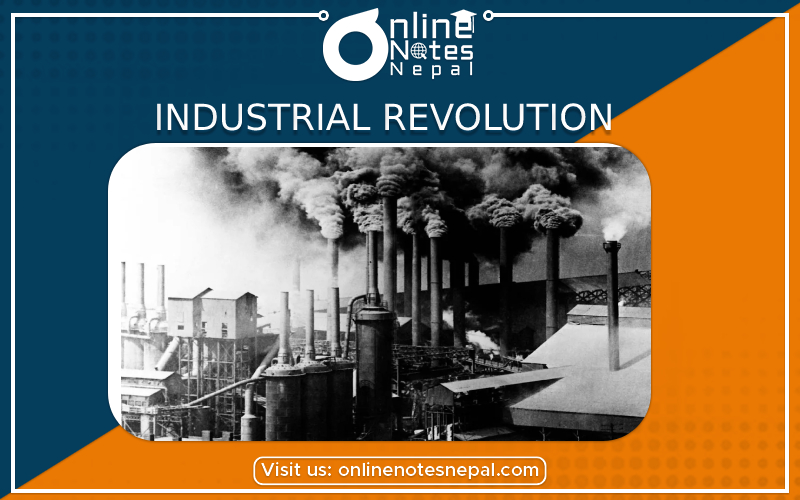Published by: Mandira
Published date: 18 Jan 2022

The Industrial Revolution took place from the 18th to 19th centuries. It was a period during which predominantly agrarian, rural societies in Europe and America became industrial and urban. Industrial Revolution began in Britain in the late 1700s.
Industrialization marked a shift to powered, special-purpose machinery, factories and mass production. The iron and textile industries played central roles in the Industrial Revolution, which also saw improved systems of transportation, communication and banking. It also resulted in often grim employment and living conditions for the poor and working classes while industrialization brought about an increased volume and variety of manufactured goods and an improved standard of living for some people.
Birthplace of the Industrial Revolution - Britain
Most people resided in small, rural communities where their daily existences revolved around farming before the commencement of industrial revolution. Life for the average person was difficult because of low income, and malnourishment and disease were common. People produced the bulk of their own food, clothing, housing, furniture and tools. Most manufacturing was done in homes or small, rural shops, using hand tools or simple machines. Due to high deposits of coal and iron ore, basic needs of industry, Britain became first country to start industrialization. Since Britain was a huge colony, it had source for raw materials and people to use their finished product. With the increase in demand increased the ideas for mass production. For mass production there were new ideas sprouting as innovations. Those ideas included invention of spinning jenny (a machine that enabled and individual to produce multiple spools of thread), cheap cast iron, railway engine, telephone and stem engine. With those new innovations there was no time for the Britain to become first industrialized state.
Further developments and changes
Industrial revolution spread outside Britain in many ways. Many entrepreneurs and engineers went out in search of new opportunities. Many governments provided state funding to the new applications. After the Civil War in the 1860’s America’s water-powered manufacturing was fully replaced by steam-power. Continental Europe quickly used the British technology in application. In 1871 Japanese politicians had study tours to Europe and the USA.
Second Industrial Revolution that started after 1850 AD witnessed many heavier works in industry and transport. The age of steam and coal had begun to merge into the age of iron steel and electricity. Crude iron could be converted into steel. Chemical industries, petrol refining and distribution, electrical industries and automotive industries were on gradual rise. Second Industrial Revolution later merged into post-industrial society also known as the age of information technology, digitization and globalization.
Industrialization made possible both ‘the conquest of nature’ and ‘betterment of the species’. Every aspect of life was influenced. Resources were utilized extensively and earning opportunities grew very much. Roadways and railways network were extensively mechanized. Mass production ensured low price and quality of goods. Work was faster and time was saved. Agriculture was industrialized. Farming was easier and production was high. People’s quest for knowledge and political rights was encouraged.
Disappointments
Along with the dimensions in earning and production, Industrial Revolution brought several disappointments. As John Ruskin claimed, which changes in methods of production had increased wealth, they had not increased well-being. Mechanization brought threat to many people’s jobs and their dissatisfaction often took the form of protests and violence. John Kay, one of the early inventors, had to see the country. Luddies, named after a mythical king Ludd, attacked factories and machineries.
There were very different conditions for rich and poor. Those who invested, earned well and lived in tremendous luxury while those ordinary workers worked in a very poor conditions. They gave way for trade unions which could develop collective bargaining. As world’s first industrial workers’ movement Chartism came with industrial workers demanding political rights (including voting rights) along with bread. Child labour was widespread. Children worked in terrible conditions. Boys and girls would pull carts of coal along dark, wet, narrow tunnels in mines.
Further reactions
Karl Marx claimed that new industrial workers were alienated from the products that they made. According to him, ‘industrialization polarized society into the bourgeoisie and the much larger proletariat’. This view essentially a reaction to Industrial Revolution developed as Marxism, the basis for communist’s movements.
In literature poets such as Blake, Wordsworth, Coleridge, Keats, etc. stressed the importance of nature in art in contrast to harsh machines and factories. It took it a form of literary movement known as romanticism. Industrialization had certainly spoiled the nature and human conditions environment was highly polluted due to waste, sewage, chemical releases, harsh sound, chimney discharges, etc. Man was treated as machinery substance.